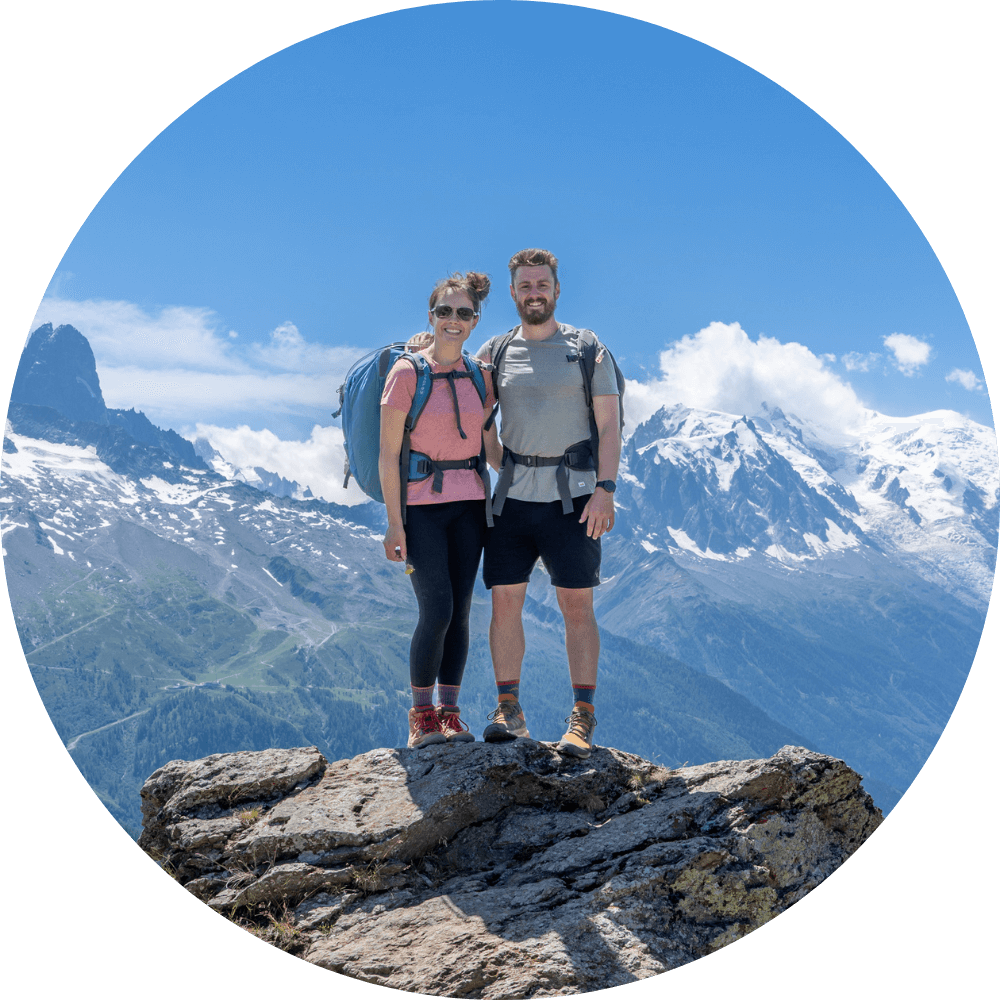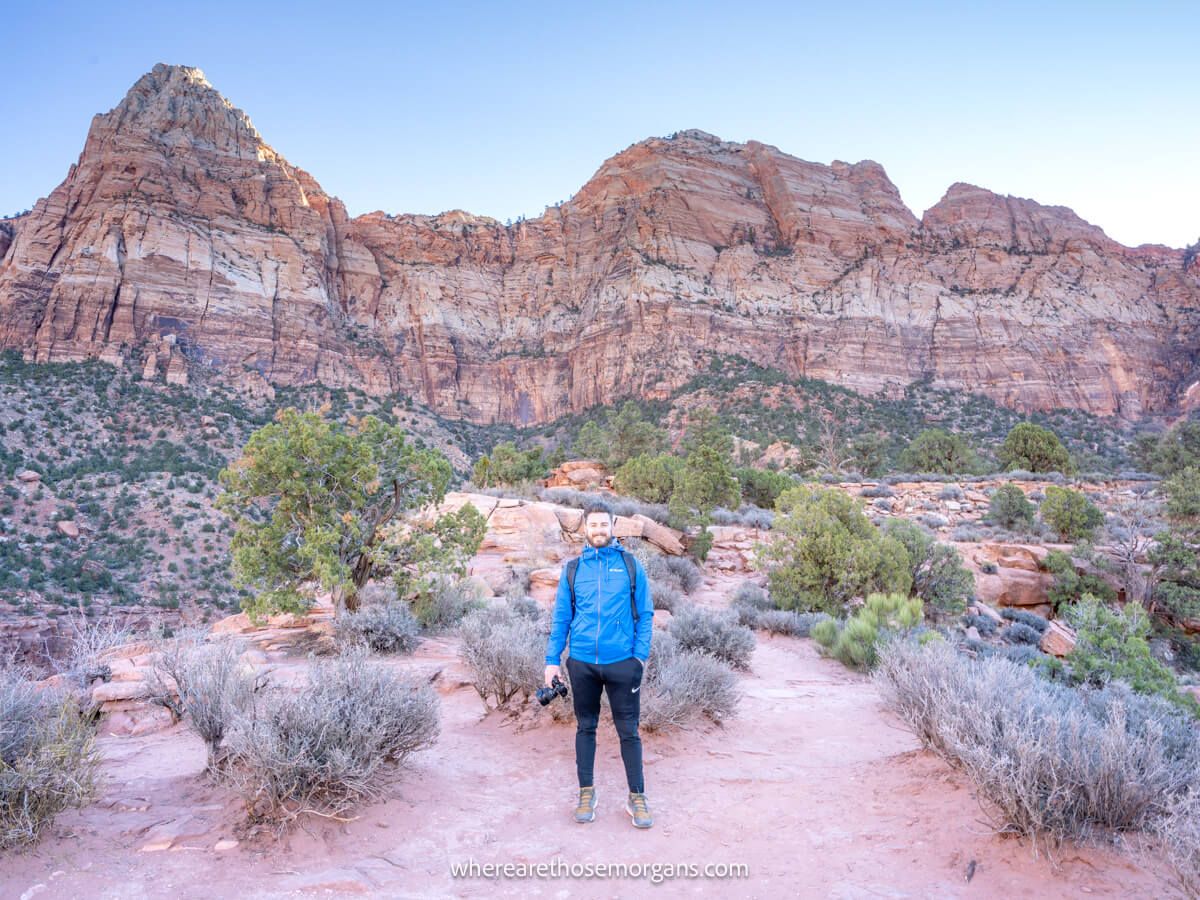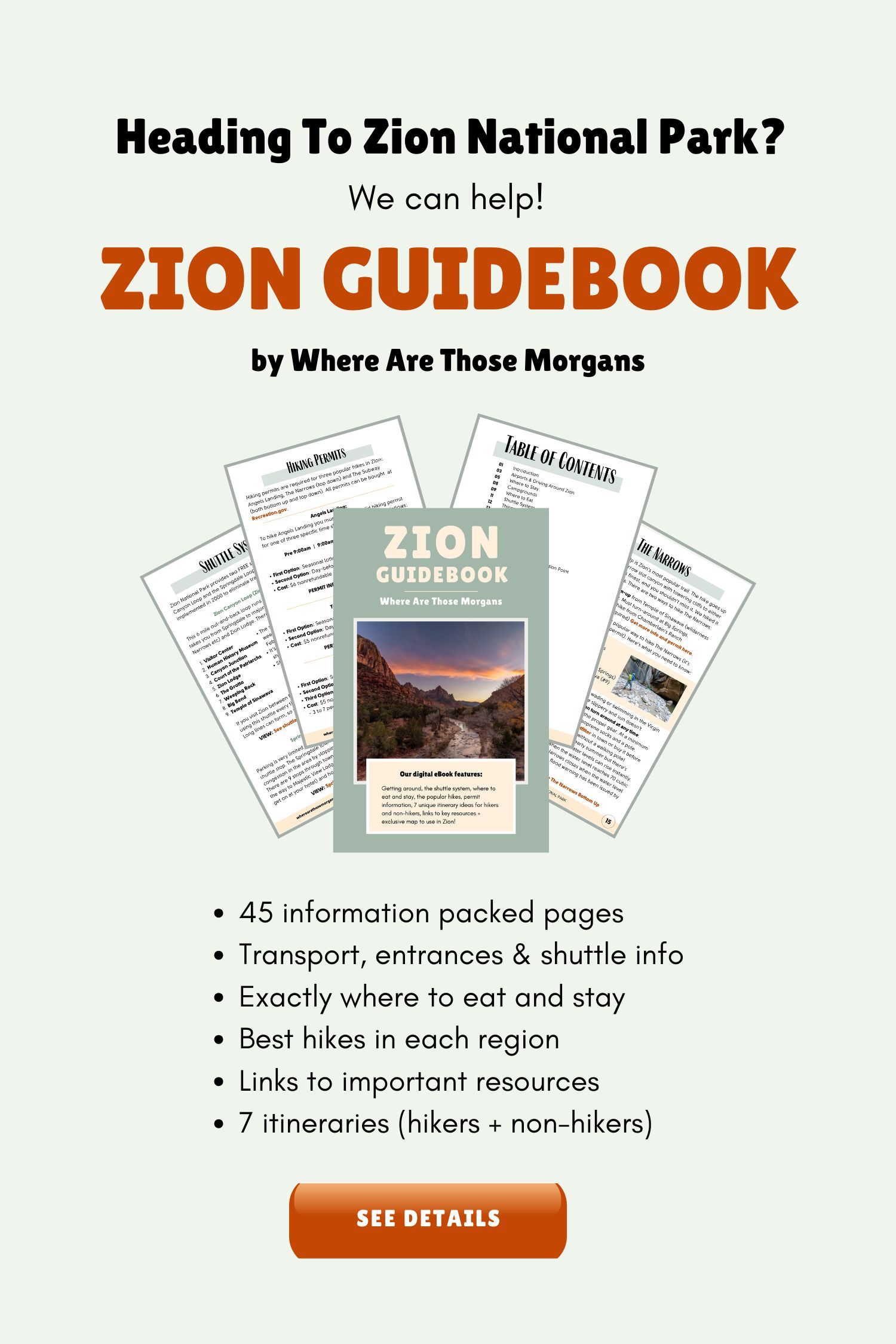Zion is one of our favorite US national parks because it’s so unique and adventurous, but it also has seasonal-specific pros and cons throughout the year. Things like hotel costs, weather, hiking conditions and crowds can play a big role in your overall enjoyment in the park, so it’s important to pick your dates well. We’ve visited Zion in fall and early winter, and it was like we went to two totally different places.
In this guide we show you the best time to visit Zion National Park, based on our experiences. Read more about us.
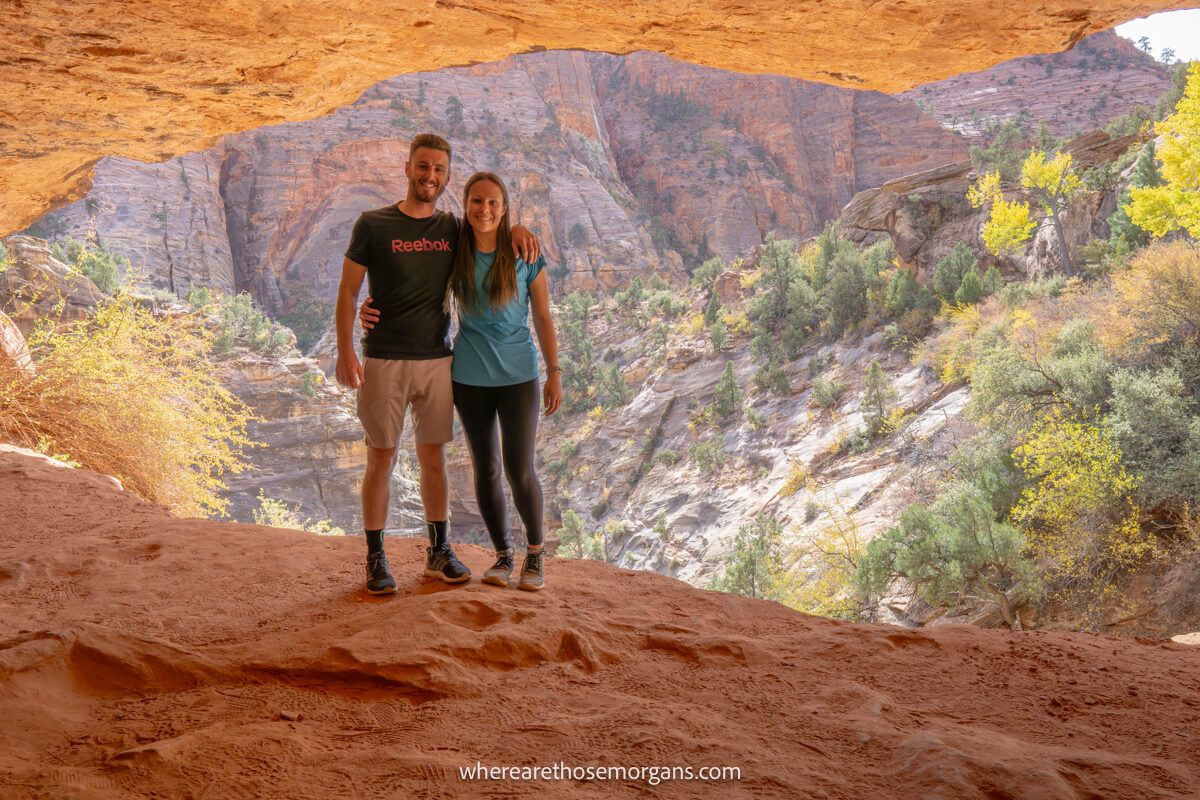
Our first trip to Zion was for 3 full days in October 2019. It was expensive, bustling and far too busy on hikes like Angels Landing. Getting parked at the visitor center was near impossible, the shuttle bus line was huge, restaurants in Springdale had wait lists and hotel prices were inflated. But daytime hiking temperatures were pleasant and water levels in The Narrows were low.
Then we revisited Zion again in November and December 2021. The park was so quiet, Springdale’s hotels were surprisingly cheap, the trails were empty, we easily got a next day permit to hike The Subway and we could drive our car into the main canyon. But, we had classic early winter weather: freezing cold mornings and evenings. Good trade off? Oh, yes! Okay, let’s begin.
Note: Our content is reader supported and contains affiliate links. If you make a purchase through one of these links, we may earn a small commission at no extra cost to you and it helps us keep this site running.
The Quick Answer

If you’re in a hurry and just want a general top-level answer, we think November-March are the best months to visit Zion. Why? Because the park receives fewer visitors, hotels are cheaper, trails are quieter and the colder weather is something we’re more than happy to put up with.
The shoulder season months of April, May, September and October would be our next preference because they have ideal temperatures for hiking, hotel prices aren’t ridiculous and crowding issues aren’t quite at their worst.
Summer is the last time we’d choose to plan a Zion itinerary because it’s hot, overcrowded and hotels heavily inflate their prices. But we know families might not have any other choice.
Now, if you’re interested in learning about the not-so-quick-answer, let’s dive in!
Zion Monthly Visitors
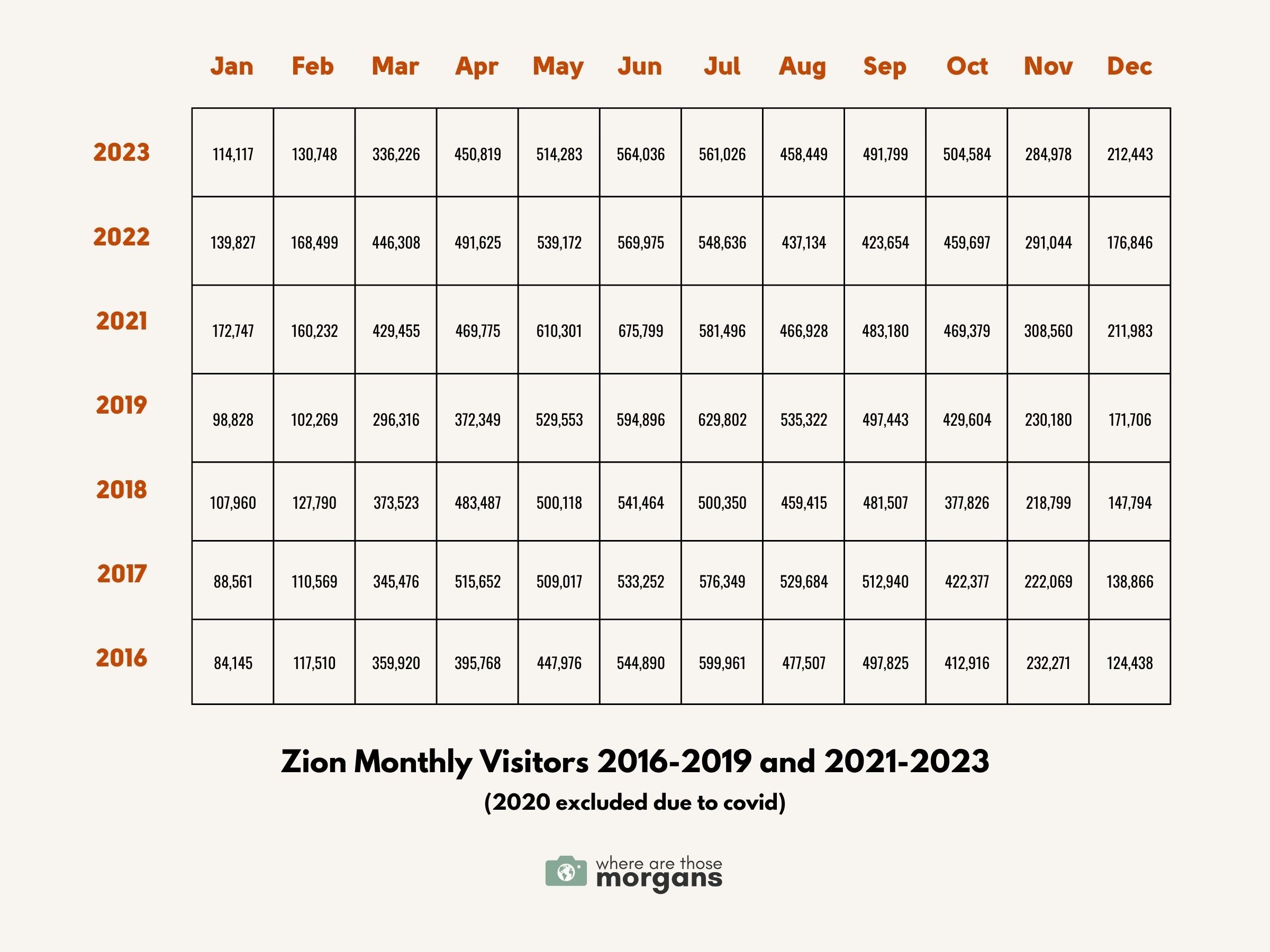
Okay, the first thing you should consider is how many people visit Zion each month. Do you like crowded places? You might want it busier because Springdale has a great vibe in the evening during peak months, or you might actively avoid the crowds so you can enjoy Zion’s top trails more. After all, hiking is what makes the park so popular.
Total monthly visitors is important because Zion’s main canyon (where most people go) is smaller than you might imagine, Springdale’s hotels only have a certain capacity and there are only so many shuttle buses. If you visit Zion in June with 600,000 other tourists (that’s 20,000 people each day), you might not have the experience you expect.
Conversely, if you visited in January with 120,000 others (that’s 3,870 people each day), you’re going to have a completely different experience. Yes, it’s going to be cold, but the benefits are clear to see. Empty trails, fewer people to compete for hiking permits and quality hotels dishing out rooms at bargain-bin rates are just the beginning.
The difference between crowd numbers when we visited in October compared with December was like polar opposites. We couldn’t even book a last minute hotel room in Springdale in October, but every single hotel was available and affordable in December. Angels Landing was jam-packed in October, but we had the summit entirely to ourselves at sunrise in December.
Annual Weather Conditions In Zion
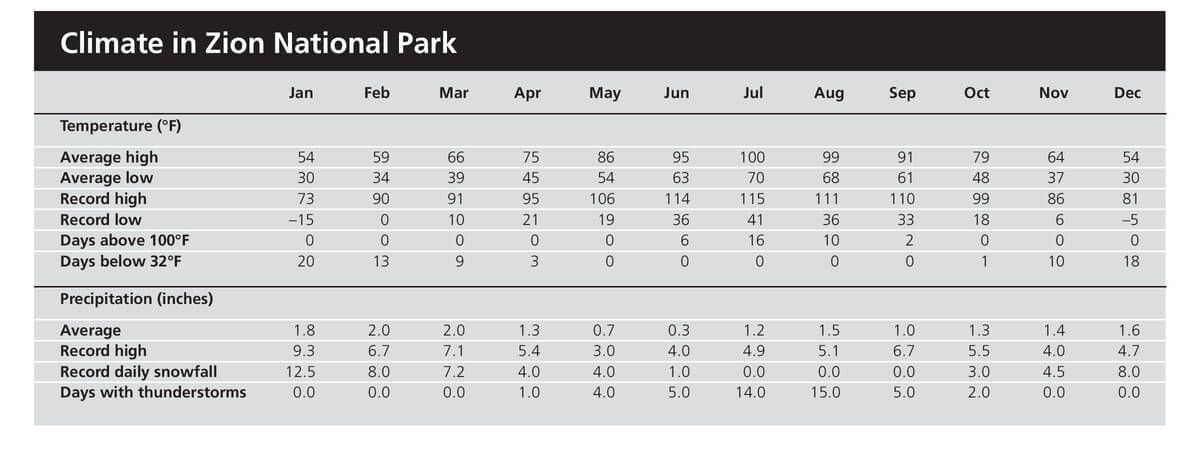
Outside of crowds (which impacts parking, shuttle buses, permits, trails, hotels, restaurants etc), we think weather is the next most important aspect you should consider. Do you prefer warm weather or hate cold weather? If you plan to hike a bunch of trails or be out shooting sunrise photography, temperatures can play a big role in your overall enjoyment.
As you can see in the image above, both the temperature and precipitation changes dramatically throughout the year. Look at those average highs in summer, no thank you!
We had cool mornings and evening with warm days in October. Whereas in December we had cold mornings and evenings with cool days. In truth, we were more comfortable in October. But we had a far more enjoyable overall experience in December all things considered.
Key Takeaways
- July and August are the two hottest months of the year.
- January is the coldest month, closely followed by December.
- Mornings and evenings are cold from November-March.
- The best chance of seeing snow is in January.
- July and August are stormy, so flash floods are common.
What We Consider
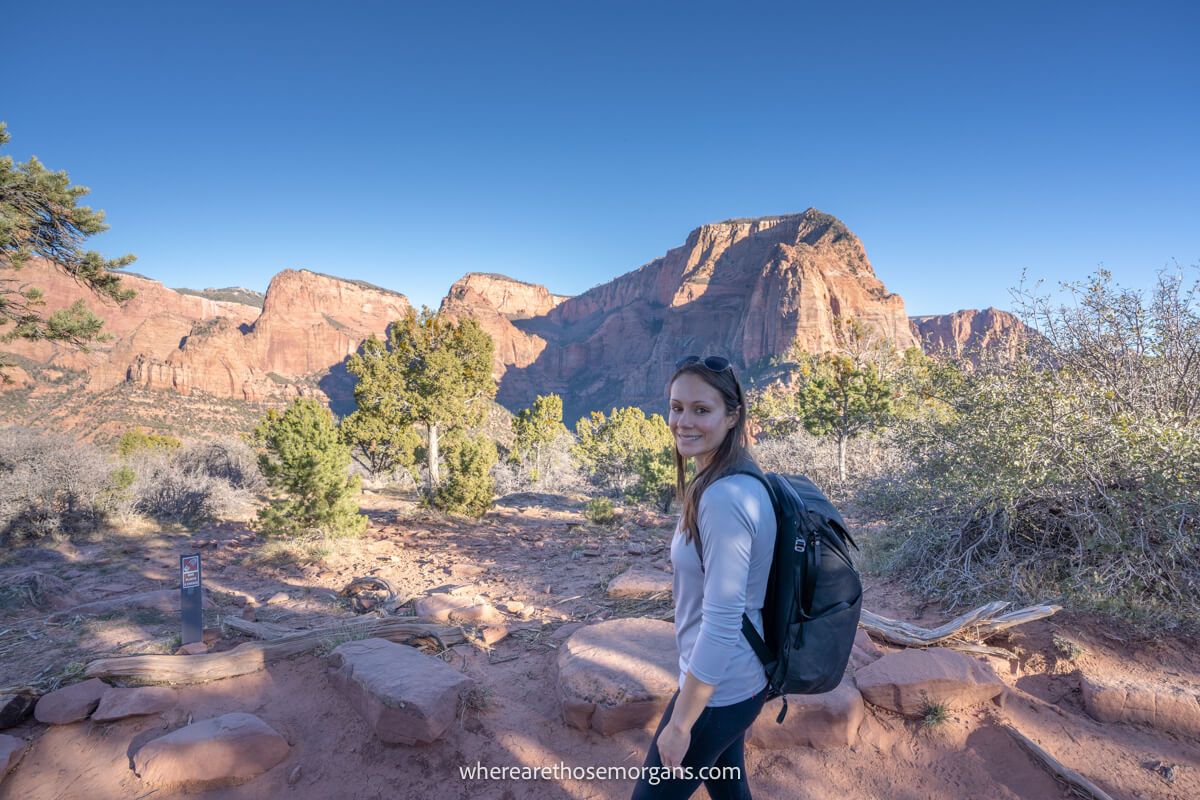
So what exactly do we think about when we visit any new place like Zion? Let’s take a look:
- Crowds – Will the park be quiet or overcrowded? How important is it to avoid crowds?
- Cost – How much do we want to spend? Will the price of a hotel room, flights and a rental car justify weather and hiking conditions?
- Weather – Are temperatures important for this trip? Will conditions impact hikes or photography?
- Hiking – Are trails open year round? How busy are they in each season?
- Photography – Are there any photo-specific considerations at different times of year?
- Location – Which seasons are best to visit the other places on our itinerary near Zion?
- Specifics – What’s unique to this park? Do we need hiking permits? Do we need to book things in advance?
This is obviously an over-the-top way to analyze every aspect of planning a trip. And you don’t need to be that intense! But they’re all great questions to ask yourself because you might be able to narrow things down more than you expect. Okay, now let’s get into the seasons.
Need help planning your trip to Zion?
Our popular Zion travel guidebook helps you with planning every aspect of your visit, including the unmissable hikes, where to eat and stay, itinerary ideas and map!
View Guidebook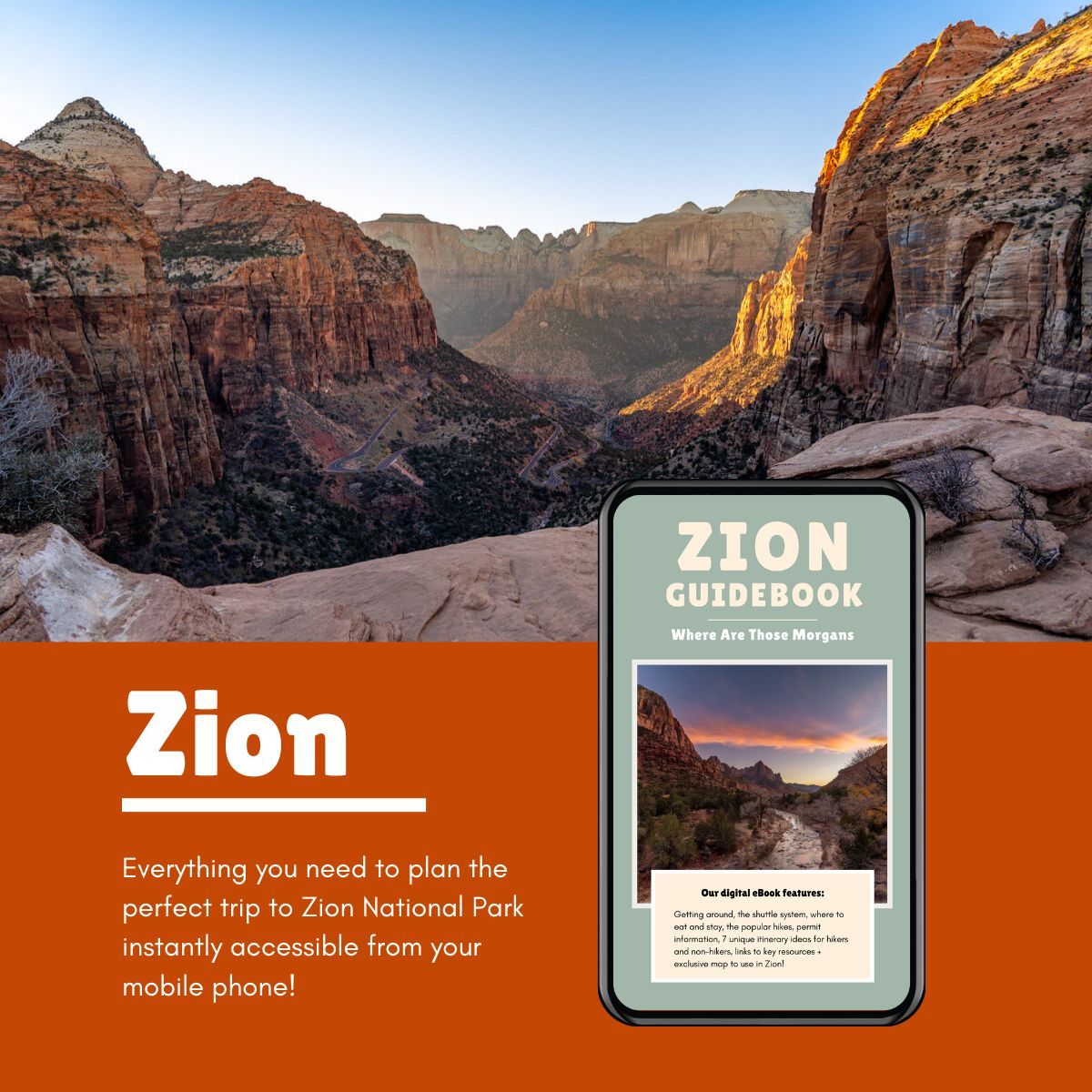
Spring
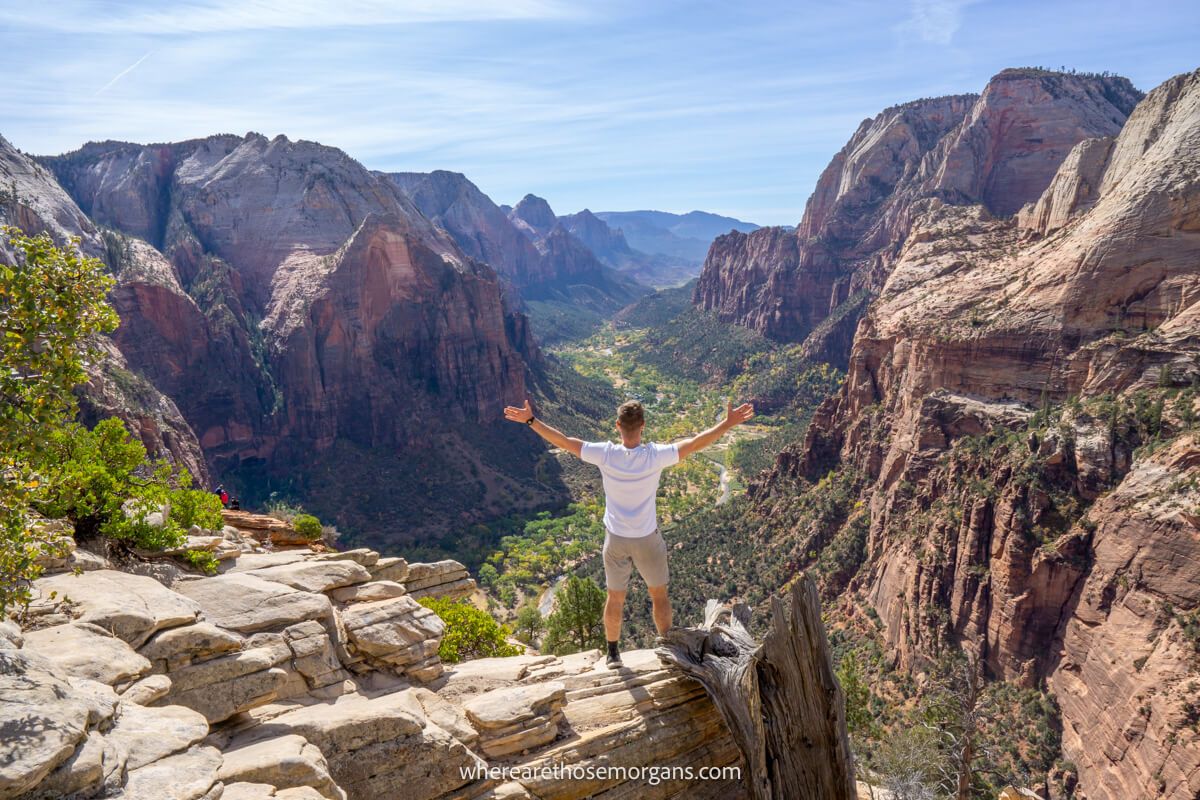
We think spring is a good time to visit Zion National Park because it has a reasonable balance between costs, weather and crowds. And it’s the only time of year you’ll see lots of water flowing in the waterfalls on Emerald Pools Trail. But it would still be our third choice after fall and winter.
Take a closer look at the monthly visitor numbers in our earlier chart and you’ll see spring has the second highest amount of tourists. The sudden high demand after a slow winter season mean hotels, airlines and rental car companies ramp up their prices.
March Weather
March is the joint wettest month of the year in Zion and it has an average of 7.2 days of rainfall throughout the month.
- Average High – 66 F (10 C)
- Average Low – 38 F (-4 C)
- Precipitation – 1.9 inches
April Weather
The weather in April is changeable with a sharp decrease in precipitation and amount of rainy days, along with a sharp increase in average temperatures. Zero “very hot” days and low relative humidity make April a comfortable month in Zion.
- Average High – 74 F (15 C)
- Average Low – 43 F (0 C)
- Precipitation – 1.1 inches
May Weather
Zion’s weather takes a huge jump up in average temperatures in May. It’s also the second driest month of the year and over 9 days of the month fall into the “very hot” category of 85 F+. Good hiking conditions early and late in the day, along with long daylight hours.
- Average High – 84 F (21 C)
- Average Low – 52 F (4 C)
- Precipitation – 0.6 inches
Here are the pros and cons to visiting Zion in spring:
Pros
✅ More affordable hotels compared to summer
✅ Perfect weather conditions for hiking
✅ Warm mornings and evenings
✅ Less crowded than summer
✅ Best time of year for waterfalls
Cons
❌ Second busiest season
❌ Not as cheap as winter
❌ Flash floods more likely
Summer
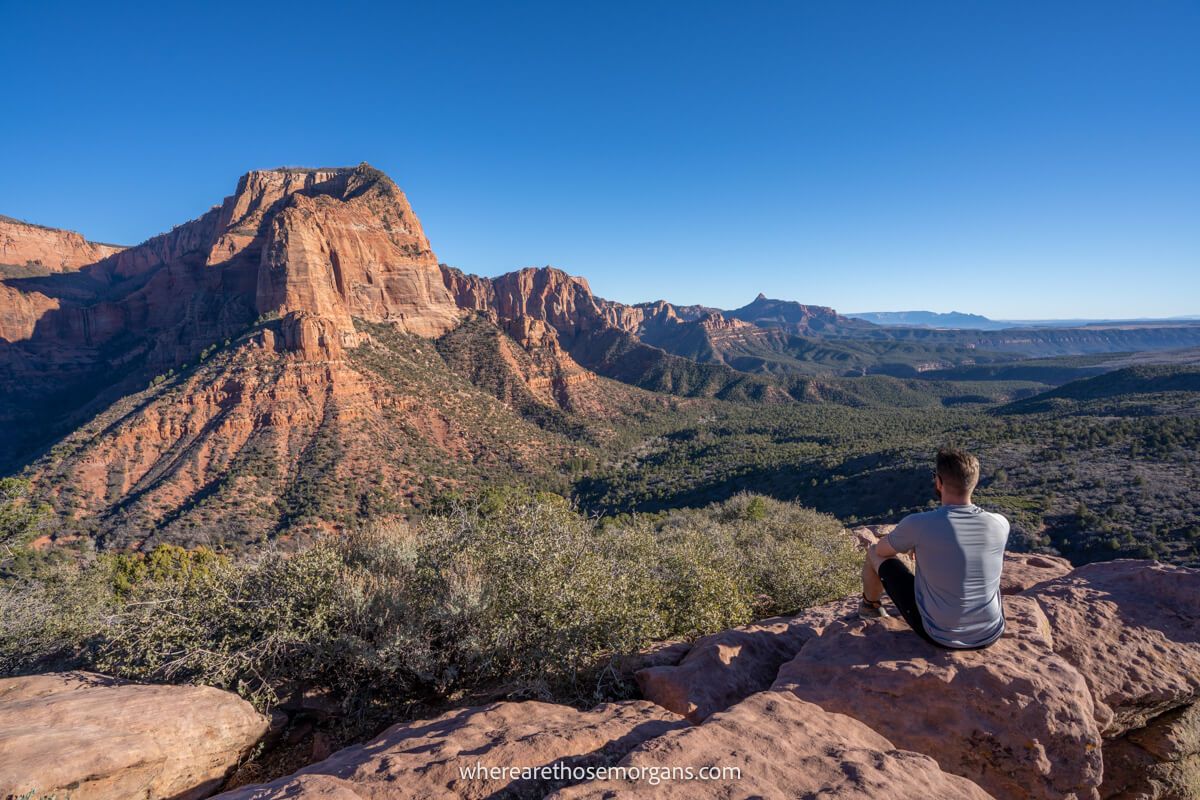
In our opinion the summer months of June, July and August are the worst times of year to visit Zion National Park because they’re hot, expensive and overcrowded. We know that’s not what you want to hear if you can only plan around school times, but it’s the truth!
Look, there are some benefits like warmer weather and longer daylight hours early in summer. But everything will cost more, you’ll have to book things well in advance and you’ll get stuck in lines for shuttle buses or restaurants in Springdale.
June Weather
June is a unique month for weather in Zion because it has high average temperatures, little humidity, long daylight hours and it’s the driest month of the year. The likelihood of rain is low but you’ll have 23 days in “very hot” conditions.
- Average High – 95 F (27 C)
- Average Low – 60 F (8 C)
- Precipitation – 0.3 inches
July Weather
July is consistently very hot in Zion and there’s a huge jump in humidity from June. Average highs of 100 F make hiking difficult in midday but average lows of 67 make mornings and evenings very comfortable. Rainfall increases and storms are frequent.
- Average High – 100 F (29 C)
- Average Low – 67 F (12 C)
- Precipitation – 1 inch
August Weather
August is the second hottest month of the year, but rainfall increases from July and it’s the most humid month of the year. Storms are very frequent. We’d say August is arguably the most unpleasant month of the year to visit Zion in terms of weather conditions.
- Average High – 97 F (28 C)
- Average Low – 66 F (12 C)
- Precipitation – 1.3 inches
Here are the pros and cons to visiting Zion in summer:
Pros
✅ No waterproof rentals required for The Narrows
✅ Warmer mornings and evenings for sunrise and sunset
✅ Longer daylight hours
✅ Can swim in pools at the end of The Subway hike
Cons
❌ Frequent storms lead to flash floods
❌ Exceptionally expensive compared to other seasons
❌ Need to book hotels months in advance
❌ Long lines at restaurants each day
❌ Can be dangerously hot during the day
❌ Hiking permits are extremely competitive
❌ Trails will be jam packed
Fall
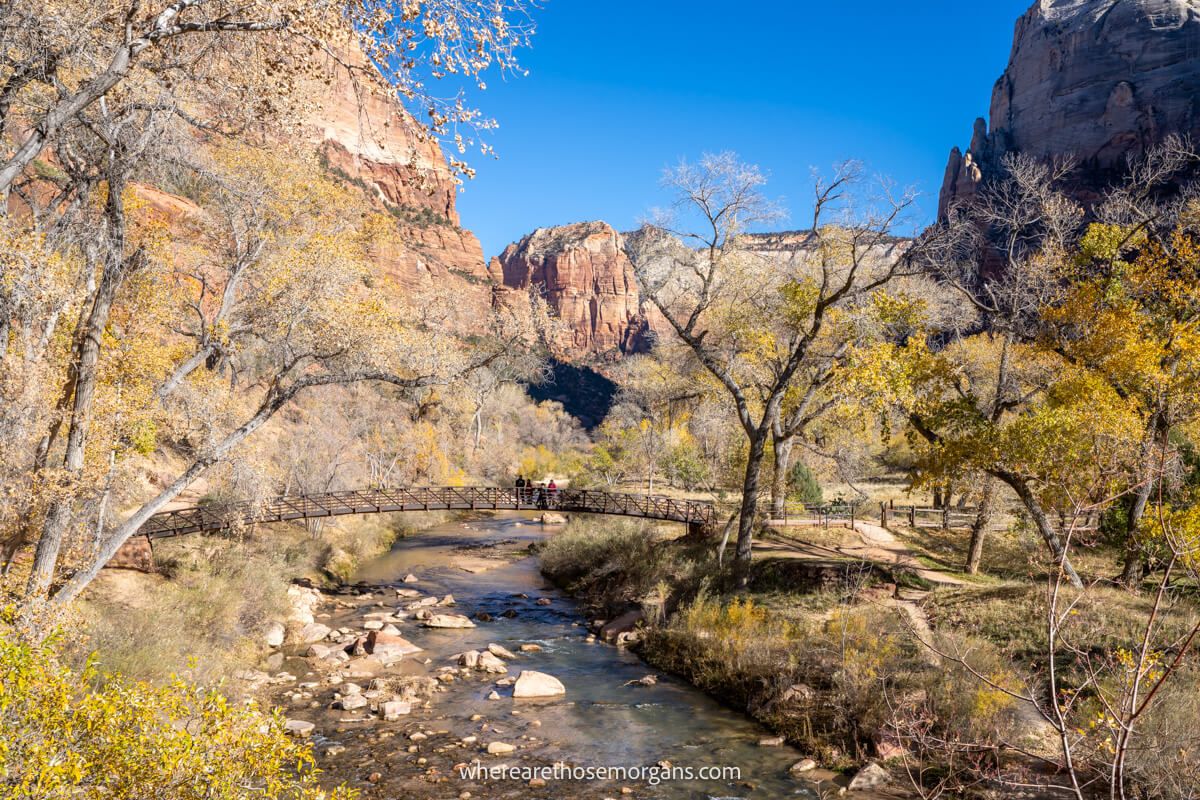
For us, it’s a toss up between fall and winter for the best time to visit Zion. What we like about fall is lower water levels in The Narrows, comfortable temperatures, and a reasonable balance between costs and crowds. Oh, and we were pleasantly surprised by Zion’s unexpectedly vibrant fall foliage colors.
September and October are still busy, although not quite as busy as their counterparts in spring. Whereas November has a bunch of benefits with the only real downside being that temperatures plummet. If you don’t mind the cold, November might just be the best month of the year to visit Zion.
September Temperatures
September brings interesting weather conditions to the park. There’s a drop in rainfall compared to August, average temperatures are similar to June, but humidity remains high from summer despite the number of “very hot” days being significantly lower.
- Average High – 90 F (24 C)
- Average Low – 59 F (8 C)
- Precipitation – 0.9 inches
October Temperatures
Zion’s weather in October takes a significant drop in average high and low temperatures from September, but it remains comfortable. Only 2-3 days are “very hot”, rainfall increases slightly on September but humidity drops heavily.
- Average High – 77 F (18 C)
- Average Low – 47 F (2 C)
- Precipitation – 1.2 inches
November Temperatures
Zion’s average temperatures plummet in November, which becomes most noticeable in the mornings and evenings. Rainfall stays consistent with October and there’s a small chance of snowfall.
- Average High – 63 F (11 C)
- Average Low – 36 F (-3 C)
- Precipitation – 1.2 inches
Here are the pros and cons to visiting Zion in fall:
Pros
✅ Less busy than spring and summer
✅ Hotels more affordable than spring and summer
✅ Lowest water levels of the year in The Narrows
✅ Good chance of winning permits
✅ Fall foliage colors in the main canyon
✅ Great weather conditions for hiking
Cons
❌ Colder mornings and evenings set back in
❌ Not as quiet as winter
❌ Water is cold in The Narrows
❌ No water in the waterfalls
Winter
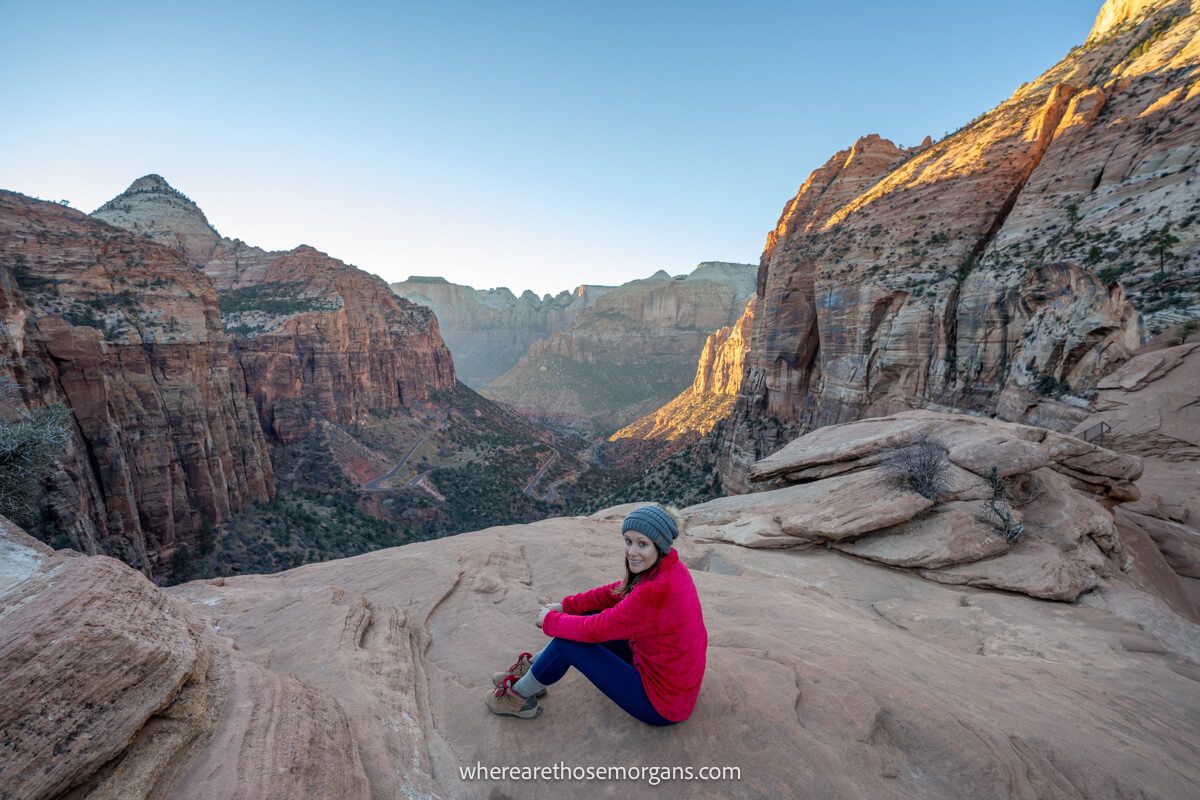
Winter is the best season to visit Zion if you don’t mind putting up with the cold. You’ll save money, avoid crowds and have the best chance at winning walk in permits for the most sought after hikes. You can also drive your own car into Zion’s main canyon and the trails will be near empty.
The biggest downsides from our early winter trip to Zion were obviously the icy cold temperatures at dawn and dusk, but also a lack of atmosphere in Springdale in the evenings. We had a lot more fun in October when the restaurants were buzzing.
December Temperatures
December is the coldest month of the year in Zion. It has the most “freezing days” with temperatures dropping below 32 F (0 C). Humidity is at its lowest, but precipitation begins to increase and it might even snow.
- Average High – 53 F (6 C)
- Average Low – 28 F (-7 C)
- Precipitation – 1.5 inches
January Temperatures
Temperatures at Zion in January are only slightly less cold than December. But January has a little more rainfall and amount of rainy or snowy days, with 20 days expected below freezing. Chances of snowfall are the same as December.
- Average High – 53 F (5 C)
- Average Low – 29 F (-8 C)
- Precipitation – 1.7 inches
February Temperatures
Zion’s average temperatures begin to rise from January into February, but that also brings the most rainfall and expected rainy days of the year. Snowfall is possible but it’s very rare in February.
- Average High – 58 F (7 C)
- Average Low – 33 F (-6 C)
- Precipitation – 1.9 inches
Here are the pros and cons to visiting Zion in winter:
Pros
✅ Quietest time of year by far
✅ Hotels extremely affordable
✅ No lines in Springdale restaurants
✅ Can drive your own car into the main canyon
✅ Hiking trails are empty
✅ Good chance of winning hiking permits
✅ Later sunrise time and earlier sunset time
Cons
❌ Freezing cold mornings and evenings
❌ Water is very cold in The Narrows
❌ Shorter daylight hours means less time hiking
The Morgan Conclusion
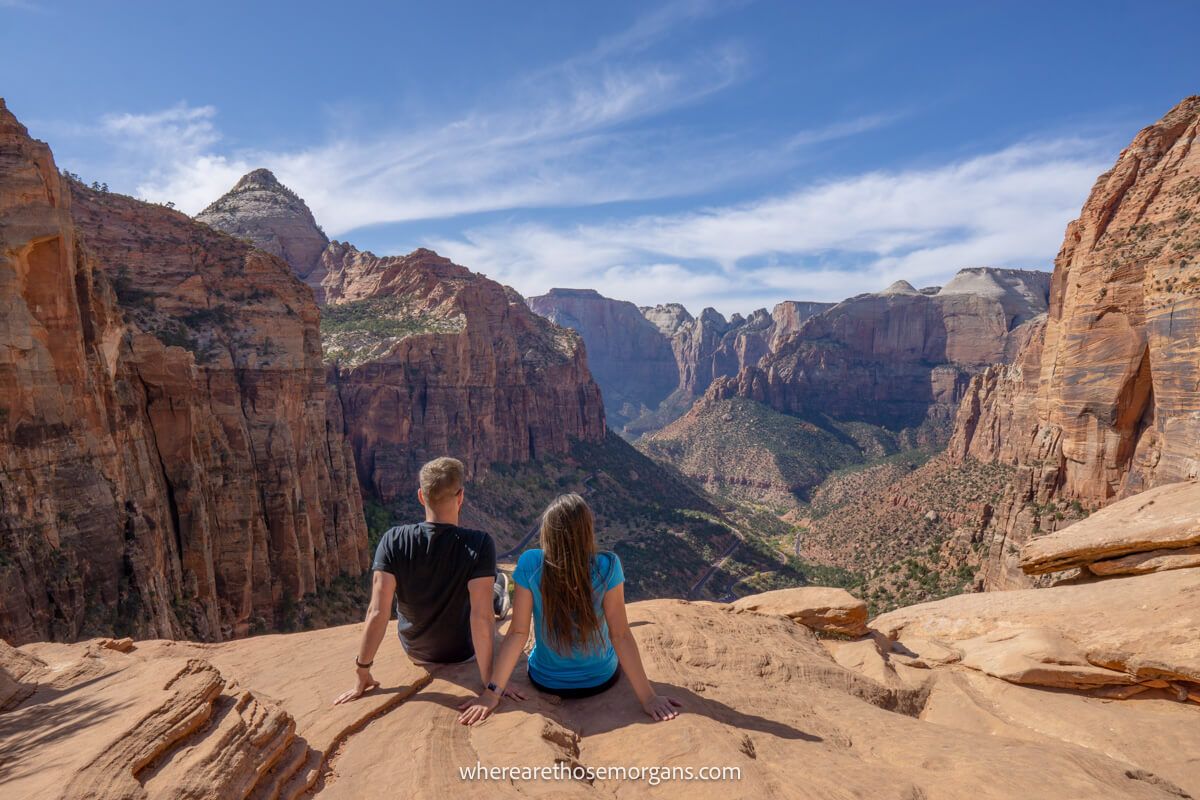
Look, you can go to Zion any month of the year and have an amazing experience. It’s such a cool place with some of the most unique hikes we’ve done to date. But if things like crowds, weather or costs will bother you, pick a month you like the sound of based on what we’ve just explained.
After visiting in October and the beginning of December, we’d say November has most of the benefits with just one or two of the downsides. If it’s your first vacation to Zion and you want to hike The Narrows and Angels Landing, the late fall season is ideal. If not, maybe try March when there’s more water in the waterfalls, but with similar visitor numbers and costs to November.
We hope our guide on when to visit Zion helps with planning your visit to Utah!
Please let us know if you have any questions in the comments below.
Happy Travels,
Mark and Kristen
Was this guide helpful? Pin it for your visit!
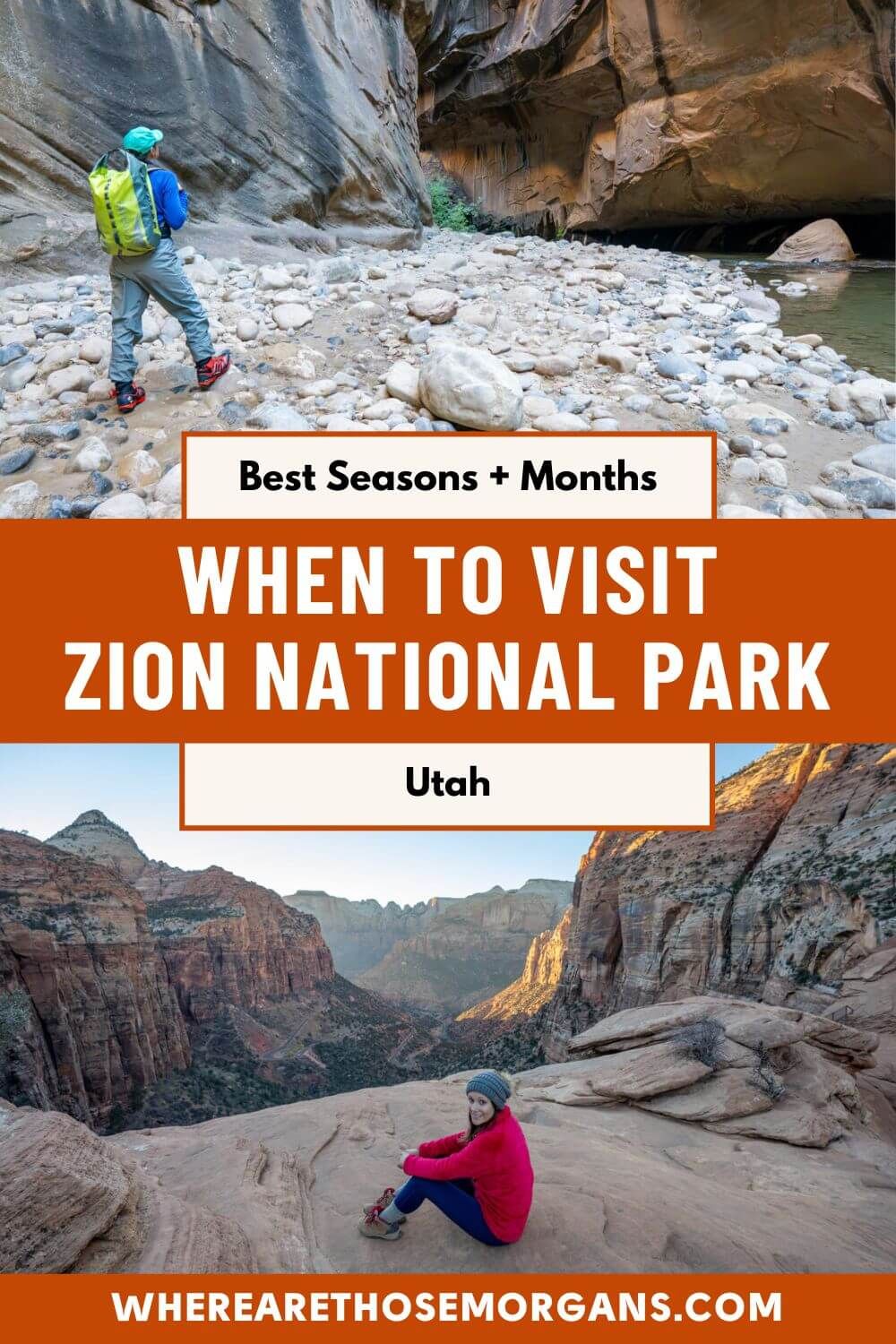
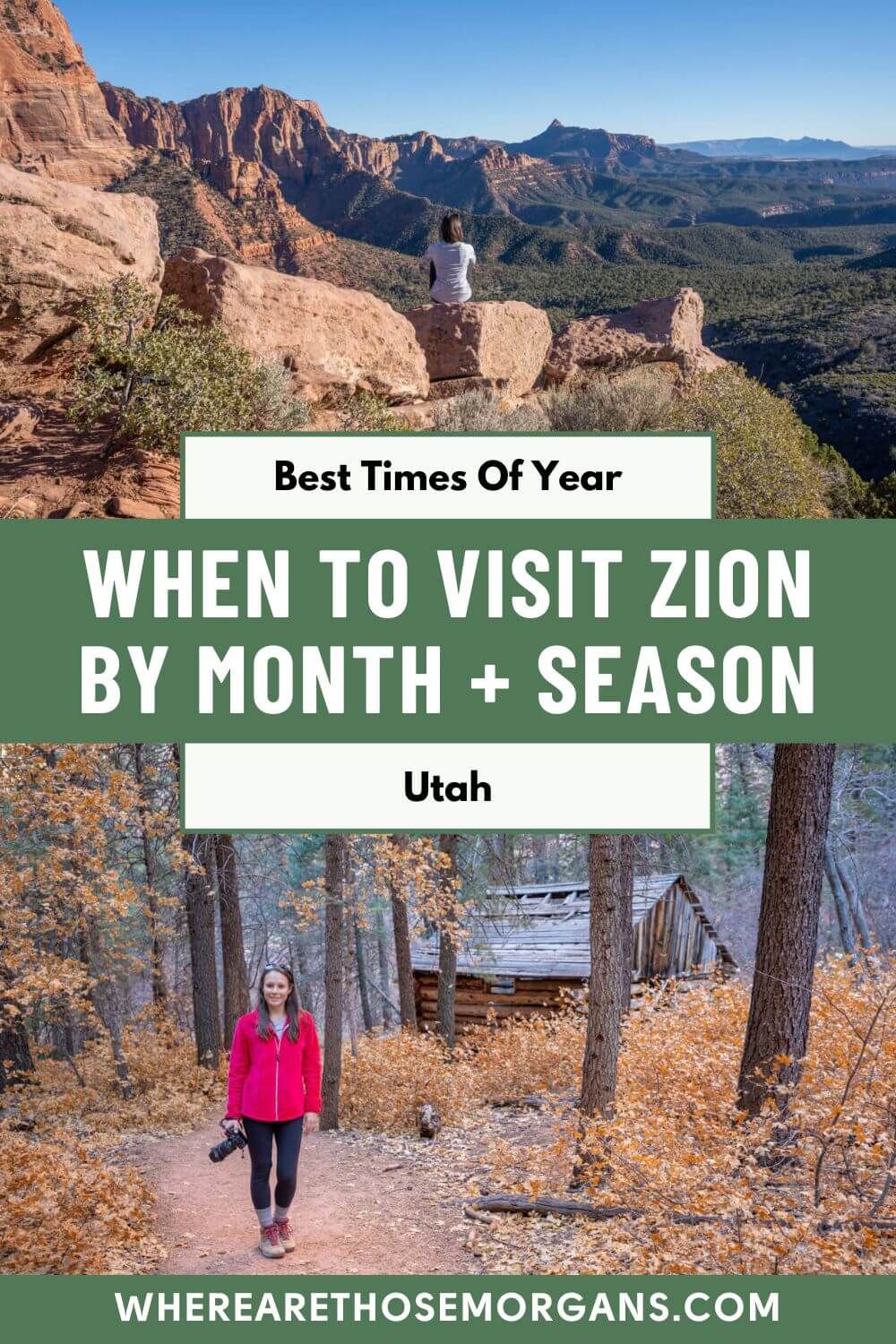
All Rights Reserved © Where Are Those Morgans, LLC. Republishing this article and/or any of its contents (text, photography, maps, graphics, etc.) in whole or in part is strictly prohibited.

